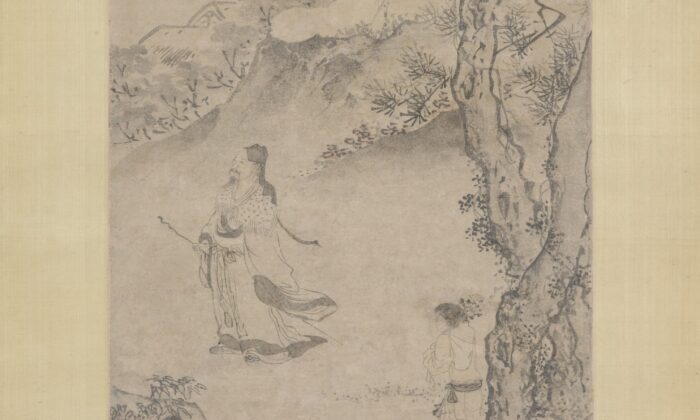|
Chinese Articles
TRADITIONAL CULTURE
Du Jin Poetry in Painting
Yuanming's poetry often evoked in readers a yearning for the simplicity of a pastoral lifestyle, away from the bustle of city life. As a result, the chrysanthemum became a symbol of seclusion and a life free of materialism. A Righteous HeartThis characterization of the chrysanthemum can further be seen in literature, such as in the story "Yuchu Xinzhi." 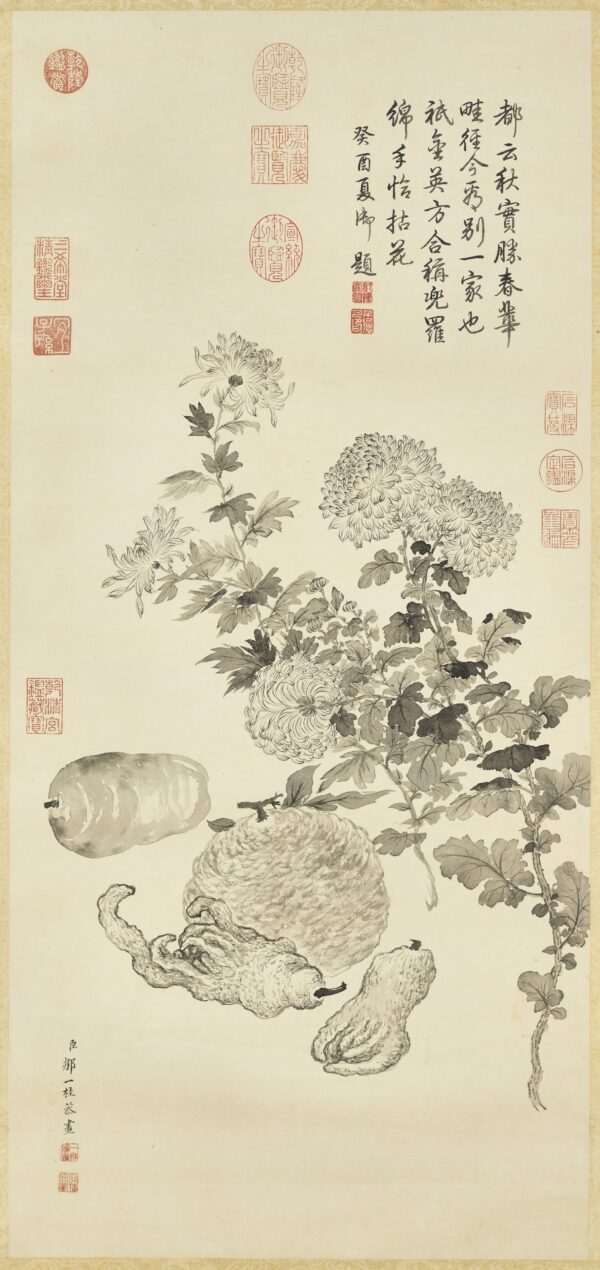 Gao Chan felt disillusioned by the fickleness of the world around him and longed for the freedom of the countryside. After some deliberation, Gao Chan realized that living a peaceful, idyllic lifestyle didn't necessarily mean he had to retreat completely from society. Therefore, he moved back to the city, found an empty plot of land downtown, and built a new home. In his garden, he planted 500 chrysanthemum bulbs. Once autumn came around, his garden was in full bloom. Its beauty and sweet fragrance attracted visitors from all over the city. Gao Chan opened the doors of his garden to the public, hoping to share his tranquil oasis with others. However, he chose to stay in the background, unknown to visitors. Guests remained unaware of the mysterious owner’s true identity, and referred to the garden by two words on the sign near the door—“Hua Yin,” meaning “hidden in the flowers.” This story demonstrates the upstanding character of Gao Chan. His love for chrysanthemums contributed to the flower’s becoming a symbol of righteousness as well as a sign of seclusion and simplicity. 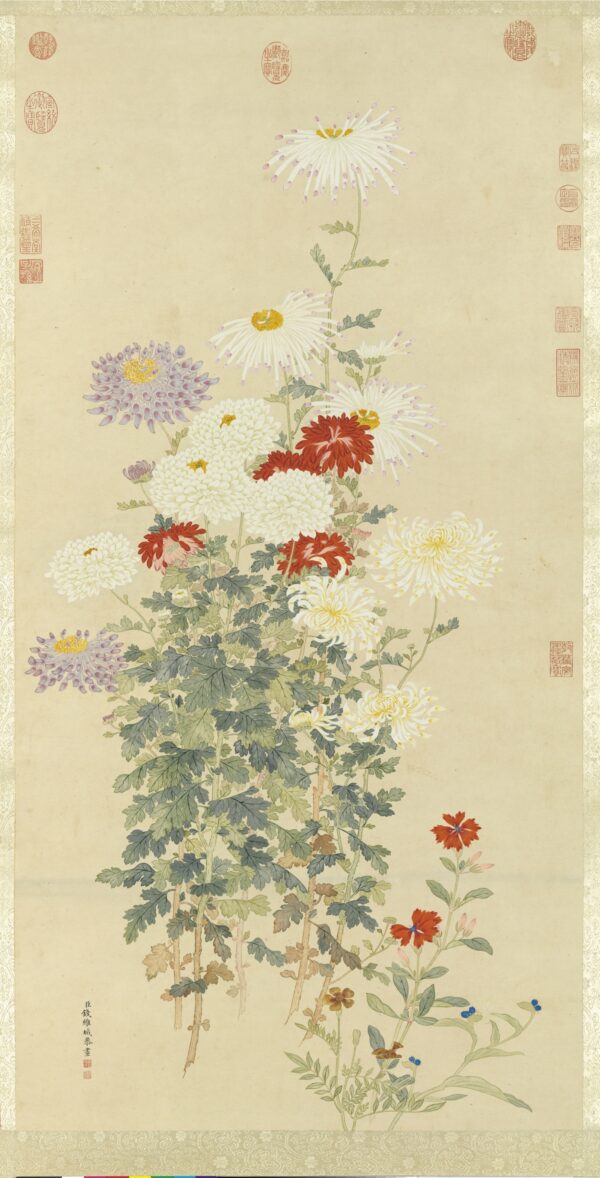 Grace and PurityIn Chinese art, the plum blossom, orchid, bamboo, and chrysanthemum are known as the "Four Gentlemen." They are the most common subjects of traditional ink-wash paintings. Artists were attracted to them not only for their beauty but also because they symbolized uprightness, purity, and perseverance. Throughout the Qing Dynasty, the chrysanthemum, in particular, served as the muse for many talented painters. One of the most famous artists of the Qing Dynasty is Yun Shouping. He is regarded as one of the "Six Masters" of the Qing period, and his works were known for their vibrancy and expressiveness. He repopularized the "mogu"—also known as "boneless"—painting technique. This skill is particularly difficult to master, as there are no outlines, and brush strokes are made directly in either ink or color. Though it is challenging, the resulting artworks are exceptionally beautiful, as the technique captures the essence of a scene or object. 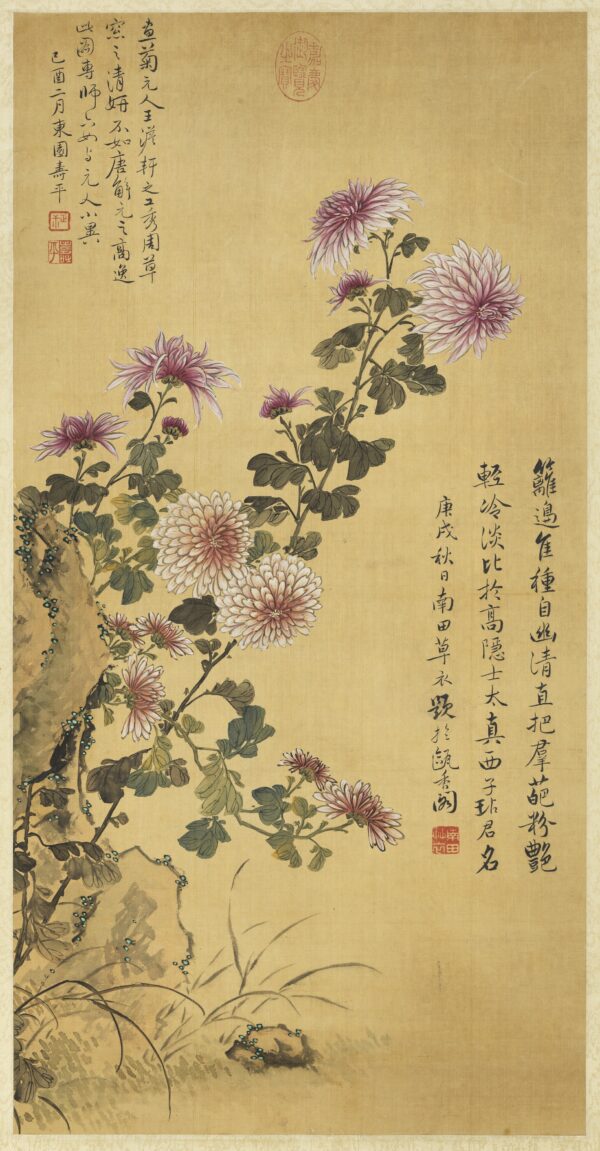 Another famous Qing Dynasty painter is Zou Yigui, who started out as a follower of Shouping's style. He was an artist for the imperial family and was known for his meticulous eye for detail, especially in his stunning flower paintings. In his book “Xiao Shan Hua Pu,” he explains the methods and techniques needed to improve one’s landscape and flower compositions. According to Yigui, being a good artist is not just about having skills. One must truly understand and be in tune with one’s subject. This means not only appreciating the beauty of the flowers, but genuinely feeling the essence of nature on a deep level. 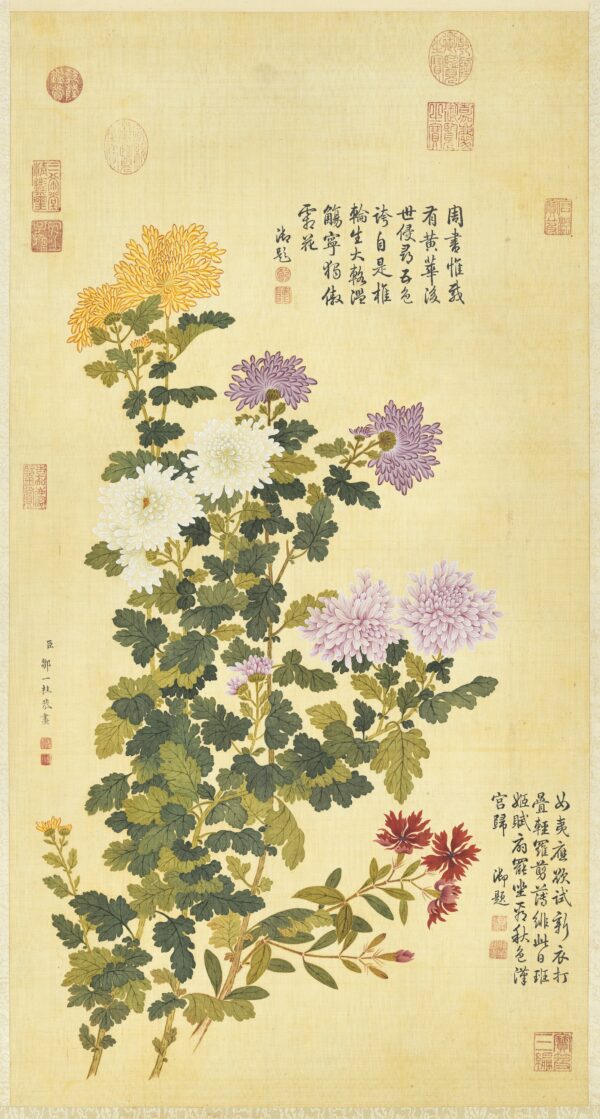 One of Yigui’s most celebrated chrysanthemum paintings is currently on display at the National Palace Museum in Taiwan. It depicts vibrant clusters of chrysanthemums blooming amid lush green leaves, and was painted using the mogu method. By painting each petal with a soft gradient effect, Yigui gives the flowers a vivid, three-dimensional feel. Looking at the painting, one is filled with a sense of peace and comfort. As the autumn leaves start changing color, and cold winds have a sharper bite, the aromatic scent of the chrysanthemum will once again fill the air. With thousands of years of rich cultural history, the chrysanthemum is much more than just another pretty flower. This autumn, take a page from the books of the ancient Chinese literati: Brew yourself a cup of chrysanthemum tea, sit by a window with a view of the changing landscape, and enjoy some traditional poetry. Source: https://www.forbes.com/sites/bernardmarr/2020/09/21/the-4-top-artificial-intelligence-trends-for-2021/#79521c041c2a
Woman sculpture in the garden
Guanyin
Terracotta
|

